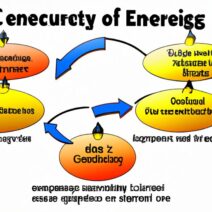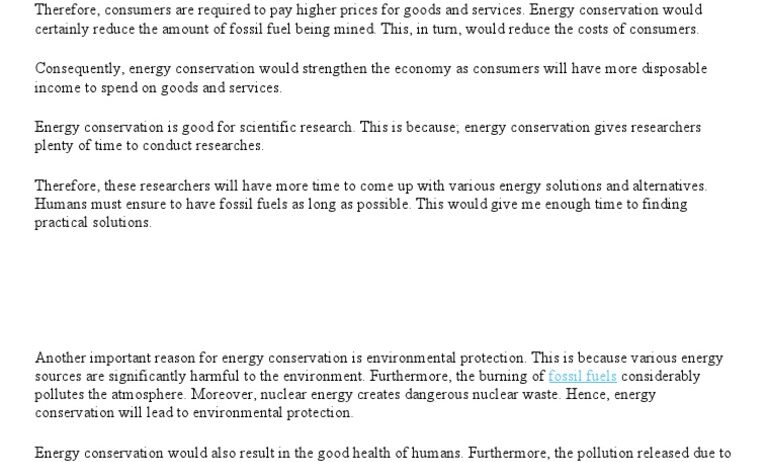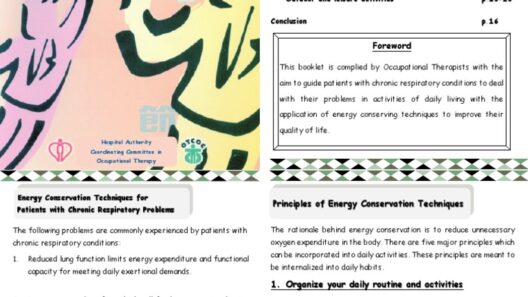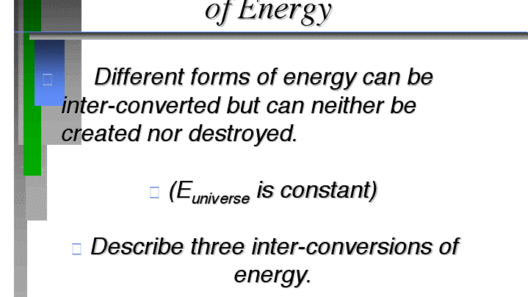In the realm of environmental stewardship, conserving energy resources is akin to safeguarding a precious and finite treasure. Just as a wise ruler protects their kingdom’s reserves, humanity must be judicious in its handling of the earth’s energy bounty. The imperatives of energy conservation extend far beyond simple frugality; they represent a profound commitment to sustainability, a pledge to mitigate ecological degradation, and an ode to future generations. Understanding what it means to conserve energy resources involves a multifaceted examination of our consumption habits, technological advancements, and societal paradigms.
To embark on this journey of energy conservation, one must first grasp the fundamental definition: conserving energy means using less energy to perform the same task or activity. This principle eliminates excess and minimizes waste while maintaining or enhancing the quality of life. It is not a matter solely of turning off unused lights or opting for energy-efficient appliances; rather, it’s a holistic approach that necessitates a shift in mindset. This can be compared to tending to a garden, where every drop of water counts, and every decision has a rippling effect on the ecosystem’s health.
The modern world pulsates with an insatiable demand for energy, driven by an ever-growing population and rampant industrialization. As energy consumption escalates, so too do the impacts on our environment. The burning of fossil fuels, our primary energy source, releases greenhouse gases that contribute to climate change—an ominous specter shadowing our existence. To conserve energy is to challenge the norm, to stride confidently away from reliance on carbon-heavy fuels, and to forge a path toward renewable alternatives such as solar, wind, and geothermal energy.
From a practical perspective, energy conservation can be approached through various avenues. Education stands as a cornerstone; by equipping individuals and communities with knowledge, the seeds of responsibility and mindfulness can blossom into significant change. Programs targeting energy literacy can galvanize collective action, fostering an environment where conserving energy becomes not just a necessity but a celebrated virtue.
Another vital component is the influence of technology. Innovations in smart home systems, such as programmable thermostats, allow homeowners to optimize heating and cooling, thereby reducing energy consumption without sacrificing comfort. Moreover, the advent of smart appliances—those that communicate their energy usage and efficiency—can dramatically alter consumer behavior. By embracing these technological advancements, we can transform our homes into sanctuaries of efficiency, using energy as a tool, not a crutch.
Institutional measures also play a crucial role in energy conservation. Governments and organizations can implement policies that incentivize energy-efficient practices, such as tax credits for renewable energy installations or stringent efficiency standards for appliances. Public transportation systems that prioritize electric and hybrid vehicles encourage reduced reliance on fossil fuels. This institutional support can create an ecosystem where energy conservation is not merely an individual’s burden but an integrated societal responsibility.
In commercial sectors, the motivation for energy conservation intertwines with economic viability. For businesses, reducing energy costs directly correlates with enhanced profitability. Measures such as utilizing energy-efficient lighting, optimizing production processes, and conducting regular energy audits can yield substantial savings. Beyond monetary benefits, companies that actively engage in conservation efforts enhance their public image, attracting a consumer base increasingly aware of sustainability’s significance. This shift represents more than a trend; it is a fundamental realignment of the market toward sustainable practices.
The appeal of energy conservation is not solely rooted in practicality but also in the ethos of community. When individuals engage in energy-saving behaviors, they contribute to a collective consciousness that prioritizes environmental well-being. Initiatives like community gardens, workshops on sustainable living, and grassroots campaigns foster connection and camaraderie among residents. Just as a hive thrives through the diligent efforts of its bees, so does a community flourish when its members unite in a shared vision of conservation.
Despite these myriad approaches to energy conservation, misconceptions abound. Many believe that the burden rests heavily on the shoulders of the individual—the notion that personal actions alone are insufficient. However, this perspective is limited. True energy conservation requires a synergistic relationship between individual actions, technological improvements, and influential policies. It is an intricate dance between the grassroots and the governance structures, each step reinforcing the other.
Furthermore, the psychological aspect of conservation cannot be overstated. Behavioral nudges, such as public commitments to conserve energy or visible reminders of energy consumption, can significantly influence habits. Just as an artist gains inspiration from a blank canvas, individuals can transformative change by establishing energy-conserving habits. Behavioral science teaches that small adjustments—the commitment to turning off devices when not in use or reducing water heater temperatures—can lead to substantial cumulative impacts, like the gentle, persistent erosion of a mountain over time.
Ultimately, conserving energy resources is not a mere checkbox in a checklist of responsibilities; it is an enduring narrative that reflects our values, priorities, and aspirations. Through a confluence of education, innovation, policy, and community, we can weave a tapestry of conservation that not only sustains the environment but enriches our lives. The act of conserving energy resonates like a harmonious symphony—a collective effort to maintain the delicate balance of our planet’s ecosystem. It is a testament to our capacity for mindful stewardship, embodying the essence of humanity’s potential to tread lightly upon the earth.







